
Dear Readers,
Mahendras has started special quizzes for IBPS |RBI | NABARD & SBI Exam so that you can practice more and more to crack the examination. This IBPS & SBI Exam special quiz series will mold your preparations in the right direction and the regular practice of these quizzes will be really very helpful in scoring good marks in the Examination. Here we are providing you the important question of reasoning ability for the IBPS |RBI | NABARD & SBI Exam.
Q.1-5. In each question below are given three statements followed by three conclusions numbered I, II and III. You have to take the given statements to be true (even if they seem to be at variance with commonly known facts) and then decide which of the given conclusions definitely does/do not follow(s). Give answer-
(2) Only II and III definitely do not follow.
(3) Only I and II definitely do not follow.
(4) Only III definitely does not follow.
(5) Only I definitely does not follow.
प्र.1-5. नीचे दिये गये प्रत्येक प्रश्न में तीन कथन और उसके बाद तीन निष्कर्ष I, II और III दिये गये है। आपको दिये गये कथनों को सत्य मानना है (चाहे वें ज्ञात तथ्यों से भिन्न क्यों न हो) और फिर तय करना है कि दिये गये निष्कर्षों में से कौन-सा /से निष्कर्ष निश्चित रूप से अनुसरण नही करता/ते है/हैं। उत्तर दीजिए-
(1) केवल II निश्चित रूप से अनुसरण नहीं करता है।
(2) केवल II और III निश्चित रूप से अनुसरण नहीं करते हैं।
(3) केवल I और II निश्चित रूप से अनुसरण नहीं करते हैं।
(4) केवल III निश्चित रूप से अनुसरण नहीं करता है।
(5) केवल I निश्चित रूप से अनुसरण नहीं करता है।
Q.1. Statements:
Some one are two.
All two are three.
No three is a four.
Conclusions:
I. At least some four are two.
II. All three being one is a possibility.
III. At least some three are two.
प्र.1. कथन:
कुछ एक, दो है।
सभी दो, तीन है।
कोई तीन, चार नहीं है।
निष्कर्ष:
I. कम से कम कुछ चार, दो है।
II. सभी तीन के एक होने की एक सम्भावना है।
III. कम से कम कुछ तीन, दो है।
Q.2. Statements:
Some five are six.
All six are seven.
Some seven are eight.
Conclusions:
I. At least some six are eight.
II. Some eight are not seven.
III. No five is seven.
प्र.2. कथन:
कुछ पांच, छः है।
सभी छः, सात है।
कुछ सात, आठ है।
निष्कर्ष:
I. कम से कम कुछ छः, आठ है।
II. कुछ आठ, सात नहीं है।
III. कोई पाँच, सात नहीं है।
Q.3. Statements:
All eleven are twelve.
All twelve are thirteen.
All thirteen are fourteen.
Conclusions:
I. All twelve are fourteen.
II. Some eleven are not thirteen.
III. Some fourteen are not twelve.
प्र.3. कथन:
सभी ग्यारह, बारह है।
सभी बारह, तेरह हैं।
सभी तेरह, चौदह हैं।
निष्कर्ष:
I. सभी बारह, चौदह हैं।
II. कुछ ग्यारह, तेरह नहीं हैं।
III. कुछ चौदह, बारह नहीं हैं।
Q.4. Statements:
All zero are five.
Some five are two.
All two are six.
Conclusions:
I. All six are five.
II. All five are zero.
III. All two not being six is a possibility.
प्र.4. कथन:
सभी शून्य, पांच हैं।
कुछ पांच, दो हैं।
सभी दो, छह हैं।
निष्कर्ष:
I. सभी छह, पांच हैं।
II. सभी पांच, शून्य हैं।
III. सभी दो के छह होने की एक संभावना है।
Q.5. Statements:
Some T are D.
Some D are P.
All P are W.
Conclusions:
I. All T being W is a possibility.
II. All P being W is a possibility.
III. Some W being D is a possibility.
प्र.5. कथन:
कुछ T, D है।
कुछ D, P है।
सभी P, W है।
निष्कर्ष:
I. सभी T के W होने की एक संभावना है।
II. सभी P के W होने की एक संभावना है।
III. कुछ W के D होने की एक संभावना है।
Q.6-10. Study the following information carefully and answer the questions given below.
Eight members Z1, Y2, X3, W4, V5, U6, T7 and S8 of a family with three generations are sitting in a row and facing towards North. There are three married couples in the family.
X3 does not sit at left end of the row. Y2, who is son of Z1, sits immediate to the left of V5. Z1’s daughter T7 sits immediate to the left of S8 and is not the neighbour of Y2’s wife. S8 is grandfather of V5. Z1 has only two children. Y2 sits fourth to the right of his wife. X3 is not T7’s husband. In a third generation there is only one child. V5 is daughter of U6 who does not sit at the corners. There are five members between the daughter of T7 and U6. Grandmother of V5 sits between X3 and T7.
प्र.6-10. निम्न सूचनाओं का ध्यानपूर्वक अध्ययन करें और नीचे दिये गये प्रश्नों के उत्तर दें।
एक परिवार के आठ सदस्य Z1, Y2, X3, W4, V5, U6, T7 और S8 तीन पीढियों के साथ एक पंक्ति में बैठे है और उत्तर की ओर देख रहे है। परिवार में तीन विवाहित जोड़े है।
X3 पंक्ति के बायें छोर पर नहीं बैठा है। Y2, जो Z1 का पुत्र है, V5 के तुरन्त बायें बैठा है। Z1 की पुत्री T7, S8 के तुरन्त बायें बैठी है और Y2 की पत्नी की पड़ोसी नहीं है। S8, V5 का ग्रैन्ड्फादर है। Z1 के केवल दो बच्चे है। Y2 अपनी पत्नी के दायें चौथा बैठा है। X3, T7 का पति नहीं है। तीसरी पीढ़ी में केवल एक बच्चा है। V5, U6 की पुत्री है जो कोनों पर नहीं बैठी है। T7 की पुत्री और U6 के बीच पाँच सदस्य बैठे है। V5 की ग्रैन्ड्मदर X3 और T7 के बीच में है।
Q.6. Who is fourth to the right of X3 and how is he/she related to V5?
(1) Y2, Uncle
(2) S8, Aunt
(3) S8, Uncle
(4) Y2, Aunt
(5) Cannot be determined
प्र.6. X3 के दायें चौथा कौन है और वह V5 से कैसे संबंधित है?
(1) Y2, अंकल
(2) S8, आण्ट
(3) S8, अंकल
(4) Y2, आण्ट
(5) निर्धारित नहीं कर सकते
Q.7. How many members sit between V5 and T7?
(1) No one
(2) One
(3) Two
(4) Three
(5) Four
प्र.7. V5 और T7 के बीच कितने सदस्य बैठे है?
(1) कोई नहीं
(2) एक
(3) दो
(4) तीन
(5) चार
Q.8. Who sits third to the left of T7’s brother?
प्र.8. T7 के भाई के बायें तीसरा कौन बैठा है?
(1) Z1
(2) X3
(3) Y2
(4) W4
(5) U6
Q.9. How many female members are there in a family?
(1) Five
(2) Four
(3) One
(4) Three
(5) Two
प्र.9. परिवार में कितनी महिला सदस्य है?
(1) पाँच
(2) चार
(3) एक
(4) तीन
(5) दो
Q.10. What is position of X3 with respect to V5’s grandfather?
(1) Second to the right
(2) Third to the right
(3) Second to the left
(4) Third to the left
(5) Immediate to the left
प्र.10. V5 के ग्रैन्ड्फादर के संदर्भ में X3 की स्थिति क्या है?
(1) दायें दूसरी
(2) दायें तीसरी
(3) बायें दूसरी
(4) बायें तीसरी
(5) तुरन्त बायें
ANSWER:-
Q.1. (5)
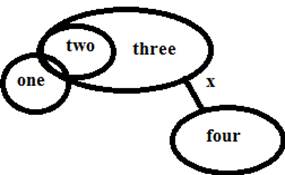

Q.2. (4)
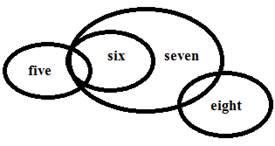
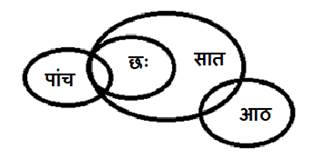
Q.3. (1)
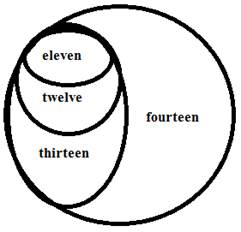
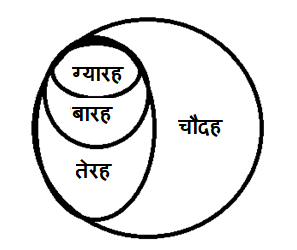
Q.4. (4)
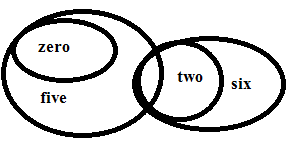
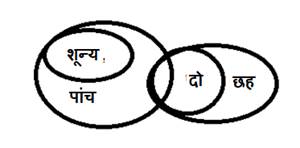
Q.5. (1)
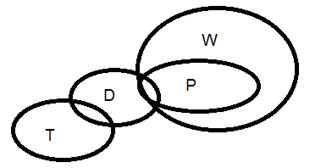
Q.6-10.

Q.6-10.

Q.6. (1)
Q.7. (3)
Q.8. (1)
Q.9. (2)
Q.10. (4)




0 comments:
Post a Comment
MAHENDRA GURU